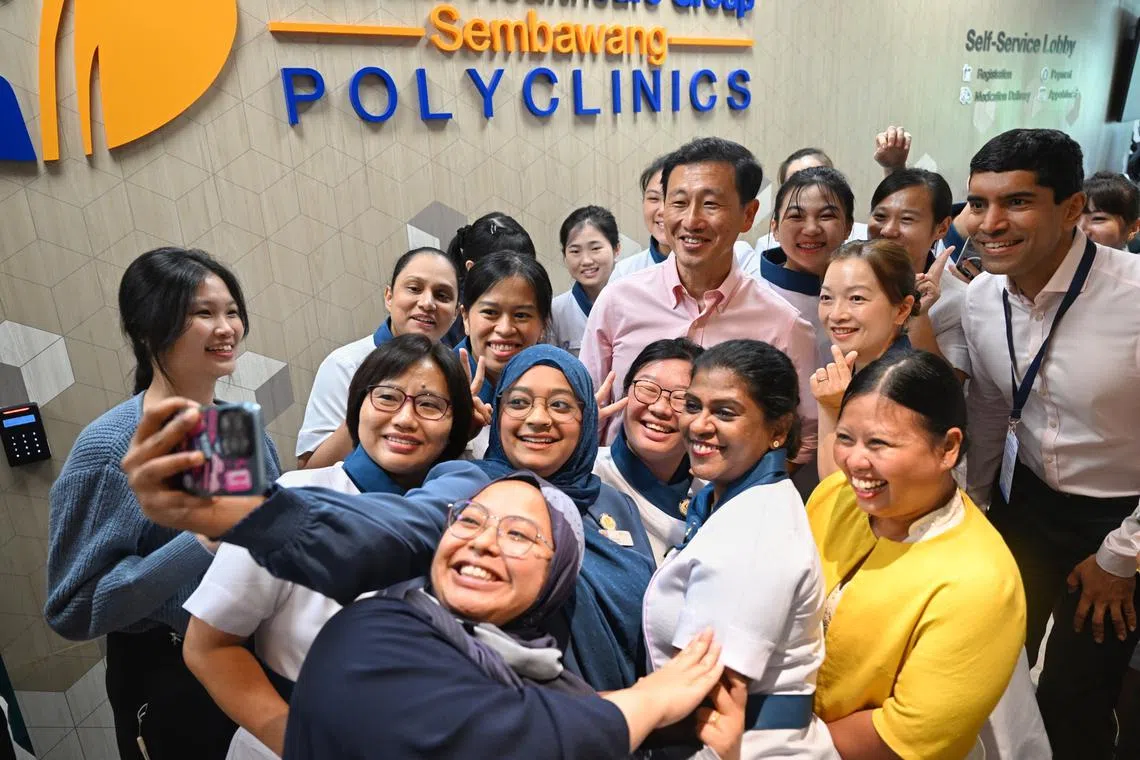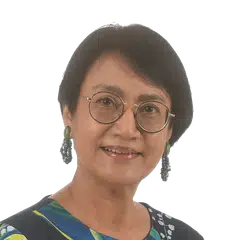Polyclinics must work with the community to promote better health: Ong Ye Kung
Sign up now: Get ST's newsletters delivered to your inbox
Follow topic:
SINGAPORE – Polyclinics really need to link up with the community in order to maximise their impact on keeping people healthy and practise healthier living, said Health Minister Ong Ye Kung.
This is why Singapore has been “paying quite a bit of attention in ensuring that polyclinics are sited beautifully within the community and amid community facilities”, he said at the opening of Sembawang Polyclinic on Nov 25.
The country’s 25th polyclinic is nestled within Bukit Canberra, an integrated sports and community hub which also houses the biggest ActiveSG gym, as well as senior and childcare centres. This gives the polyclinic “tremendous opportunity” to interact with other players, said Mr Ong.
It is the third polyclinic after Bedok and Punggol polyclinics to be sited together with other complementary services. The next such polyclinic is likely to be Toa Payoh, which is slated to open by 2030.
But even polyclinics that are not co-located with such health and other facilities can create links with them to benefit their patients, the minister said.
He noted: “Co-locating polyclinics or healthcare facilities with community facilities is only just one aspect, which is the ‘hardware’ aspect. What is more important is how the polyclinics work with the community in bringing better health for Sembawang, and for Singapore.”
With the Ministry of Health’s shift towards promoting health, rather than just treating illness, the polyclinic has a health and wellness studio that will offer hands-on sessions on how to cook healthier meals, conduct resistance training and other fitness activities.
Sembawang will also be the first polyclinic to work with the National Parks Board to create a therapeutic garden where patients and residents can de-stress as well as exercise.
When this is ready by 2024, patients can simply take the lift to Level 3 where the garden starts. The garden extends to the adjoining hillside at that level, and will include a herb garden and fragrant flowers.
Dr Karen Ng, chief executive of the National Healthcare Group Polyclinics, which Sembawang Polyclinic comes under, said the plan is to work with partners to empower patients to make positive and sustainable lifestyle changes.
Speaking at the opening ceremony, she said: “Our collaboration with SportSG’s Active Health Lab is one example. Our care team helps patients develop exercise goals while Active Health coaches, located just next door, provide customised coaching to help patients achieve their health goals.”
Within the polyclinic proper, care coaches will identify senior patients who are living alone and at risk of social isolation and encourage them to participate in various active ageing programmes.
The polyclinic expects to treat 500 to 700 patients a day. All its 15 doctors are qualified family physicians. It also has 30 nurses, and about a dozen allied healthcare professionals, including a physiotherapist and four pharmacists.
At Bukit Canberra, the healthier lifestyle message has even spilled over to the hawker centre in the building, where 28 of its 40 food stalls use low-sodium salt. Too much sodium increases the risk of heart failure, stroke and kidney diseases.
“Our hawkers here have really done a lot to try to make their food not just delicious, but also healthy,” said Mr Ong, who, as an MP for Sembawang GRC, is proud of this development in his ward.

Health Minister Ong Ye Kung (centre, in pink), Sembawang GRC MPs Vikram Nair (extreme right), and Mariam Jaafar (in yellow), taking a selfie with staff of Sembawang Polyclinic during its launch on Nov 25.
ST PHOTO: AZMI ATHNI
While he had been “a very naggy health minister” when interacting with the stallholders, the hawkers themselves went one better.
He had suggested that hot drinks should be “siew dai” – or less sweet – by default. But the hawkers told him they would instead make the default “kosong”, the colloquial shorthand for no sugar. Sugar will be there for people to add the amount they want.
Mr Ong also took the opportunity to urge seniors and people who are medically vulnerable to go for their Covid-19 booster vaccine
He said people tell him they are worried about the side effects.
He said the side effects are minor, often just an ache at the vaccine site and perhaps a slight fever.
The most serious is myocarditis, or inflammation of the heart muscles. Males aged 12 to 30 are the most susceptible. They face a one in 100,000 chance of getting it, though for the majority, it was fairly mild.
But people are now associating Covid-19 vaccine with increased risk of getting cancer, heart attacks and stroke. “We really have to correct this misperception,” he said.
“Even before Covid-19 and vaccination, every day, there are 60 Singaporeans who either suffer a heart attack or stroke, and six more Singaporeans require kidney dialysis.
“These are driven by lifestyles over many years – too much salt, too much sugar, lack of exercise and smoking – that accumulate. But when you have so many people suffering from stroke, heart attack and (needing) dialysis every day, after a while, they start associating and blaming it on vaccination.”
He stressed that chronic illness and rising incidence of cancer are driven by years of unhealthy lifestyle.
“Vaccination helps to protect us against severe illness during infection that will come wave after wave. We cannot link the two.
“If we are really worried about heart attack, cancer and stroke, we should change our lifestyle in time, to live a healthier lifestyle. In the meantime, Covid-19 and different types of infections are still around, so do take our vaccination and protect ourselves against it.”


